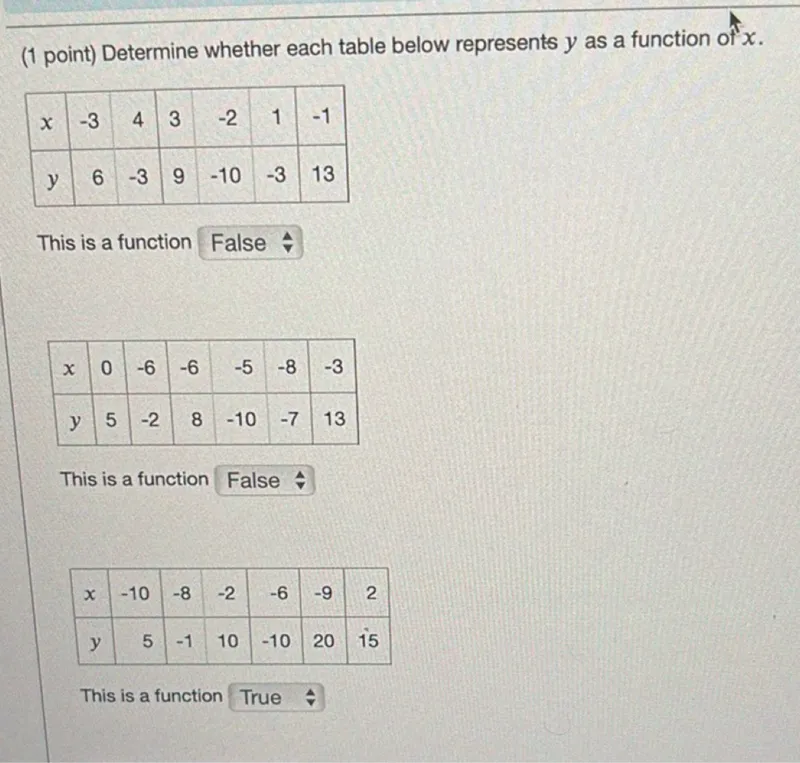Questions: Determine whether each table below represents y as a function of x. x -3 4 3 -2 1 -1 y 6 -3 9 -10 -3 13 This is a function False x 0 -6 -6 -5 -8 -3 y 5 -2 8 -10 -7 13 This is a function False x -10 -8 -2 -6 -9 2 y 5 -1 10 -10 20 15 This is a function True

Transcript text: (1 point) Determine whether each table below represents $y$ as a function of $x$.
\begin{tabular}{|c|c|c|ccc|c|}
\hline$x$ & -3 & 4 & 3 & -2 & 1 & -1 \\
\hline$y$ & 6 & -3 & 9 & -10 & -3 & 13 \\
\hline
\end{tabular}
This is a function False $\hat{\rightharpoonup}$
\begin{tabular}{|c|c|c|c|c|c|c|}
\hline$x$ & 0 & -6 & -6 & -5 & -8 & -3 \\
\hline$y$ & 5 & -2 & 8 & -10 & -7 & 13 \\
\hline
\end{tabular}
This is a function $\square$ False
\begin{tabular}{|r|r|r|r|r|r|r|}
\hline$x$ & -10 & -8 & -2 & -6 & -9 & 2 \\
\hline$y$ & 5 & -1 & 10 & -10 & 20 & 15 \\
\hline
\end{tabular}
This is a function $\square$ True





